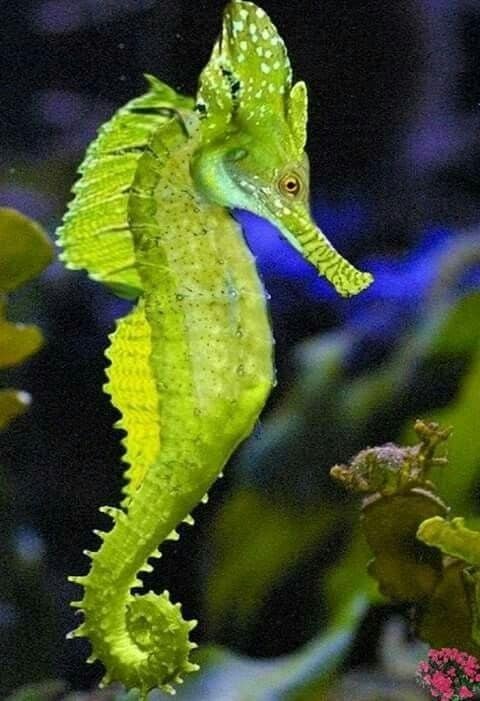1. Unique Reproduction: Seahorses are one of the few animal species where males become pregnant. The male seahorse has a specialized pouch where the female deposits her eggs, and he carries them until they hatch.
2. Species Variety: There are around 70 different species of seahorses, and they can be found in warm, shallow waters around the world, often in coral reefs, seagrass beds, and mangroves.
3. Camouflage Experts: Seahorses have the ability to change color to blend in with their surroundings, which helps them avoid predators.
4. Slow Swimmers: Seahorses are not strong swimmers. They rely on their dorsal fins, which beat rapidly (up to 35 times per second), to propel themselves through the water. They often anchor themselves to seagrasses or corals using their prehensile tails.
5. Diet: Seahorses primarily eat small crustaceans like shrimp and plankton. They have no stomach and must eat almost constantly to stay alive.
6. Lifespan: The average lifespan of a seahorse is about 1 to 5 years, depending on the species and environmental conditions.
7. Threats and Conservation: Seahorses face threats from habitat loss, pollution, and overfishing. They are often caught in fishing nets and are also harvested for traditional medicine and as aquarium pets.
8. Eye Movement: Seahorses have unique eyes that can move independently of each other, allowing them to scan their surroundings for predators and prey.
9. Social Creatures: Some species of seahorses are known to form monogamous pairs and engage in elaborate courtship dances that can last for several days.
10. Symbolism: In various cultures, seahorses are often seen as symbols of patience, protection, and strength due to their unique characteristics and behaviors.


Comments